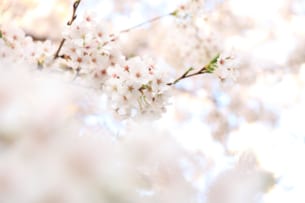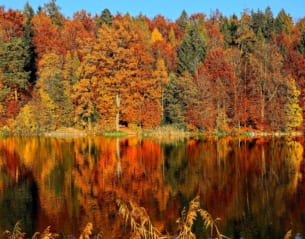Cherry Blossom and Full Bloom Forecast for 2024 (Part 6)
Cherry blossom front blooms to Tohoku, Aomori to bloom on the 14th
Press Release
Japan Weather Association (JWA) released its part 6 forecast for cherry blossoms and full bloom for various locations across Japan on Wednesday 10th April 2024.
Cherry Blossom Forecast Map
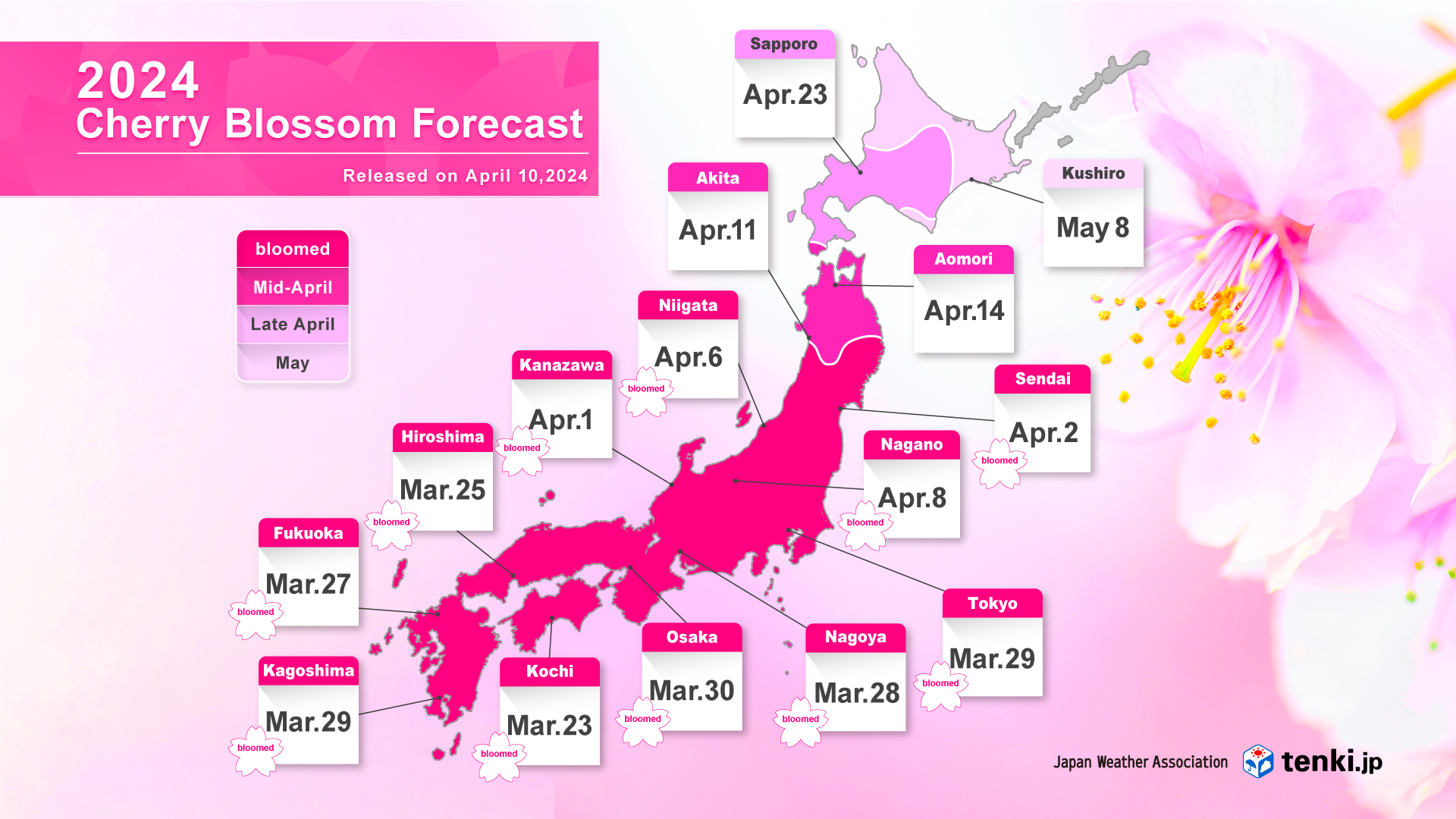
Bloom Forecast Dates (Major Locations)
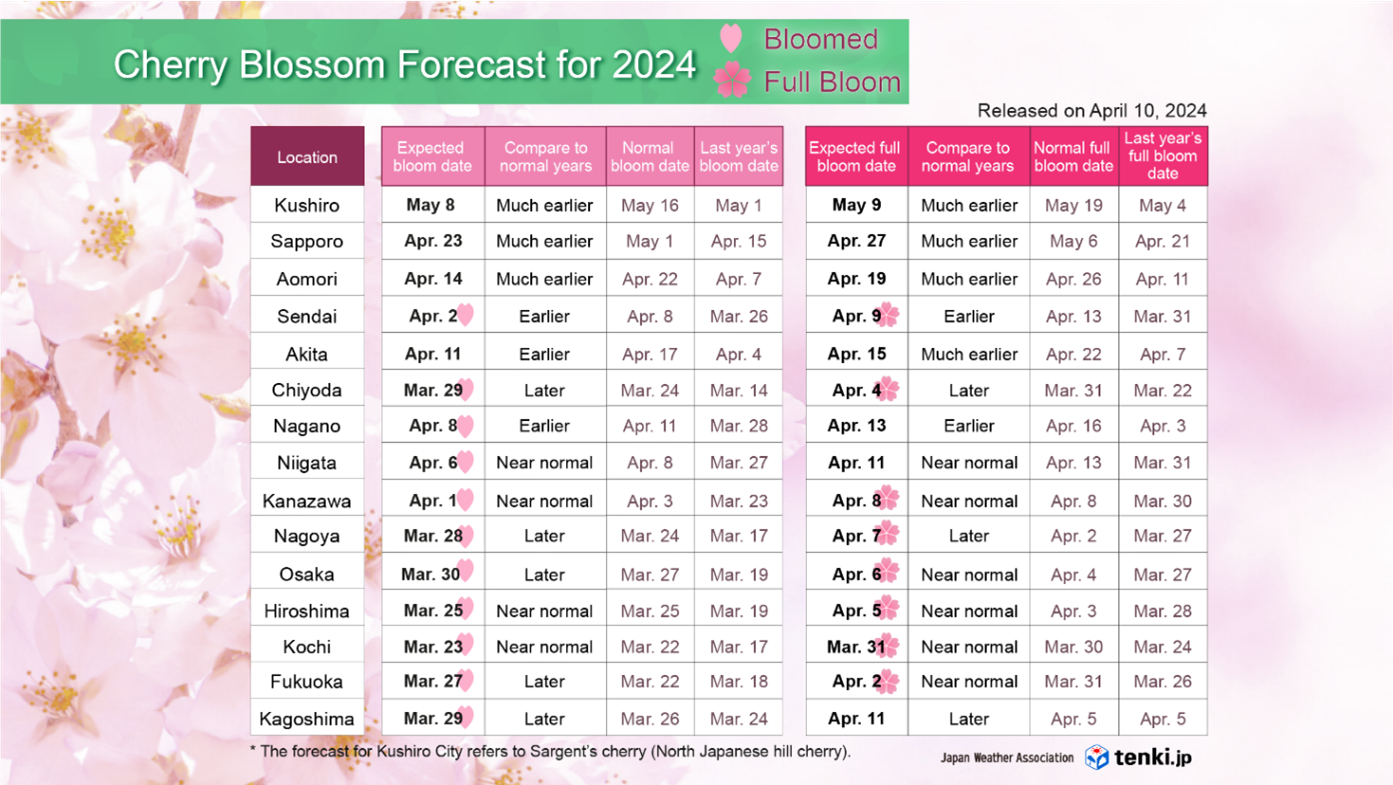
Trend of Blossoming and Full Bloom
Early April registered temperatures higher than normal nationwide, hence there was a rush of flowers blooming and many places reached full bloom. Trees are in full bloom in various locations, from Kagoshima City in the south, to Kitakami City in the north*1. As of 1:00 p.m. on the 10th, there were 63 locations in bloom and 47 locations in full bloom.
Looking back at this year’s flowering so far, our findings show that areas in the north seem to bloom earlier than normal, while areas south of Kanto exhibit a tendency to bloom later than normal. This is probably because the northern regions are less susceptible to the effects of delayed dormancy breaking, even in milder winters, and the high temperatures from late March to early April encouraged cherry blossoms to bloom earlier than normal.
From now on, temperatures are expected to remain higher than normal across the country until late April. Therefore, in northern Japan, both flowering and full bloom in many places are expected to be earlier than normal, and in some places it may be much earlier.
Blooming is expected in Akita and Morioka on April 11th, and in Aomori on the 14th. After reaching full bloom in Aomori on the 19th, it will reach Hokkaido in mid-April, followed by Sapporo on the 23rd and Asahikawa on May 1st.
* The information for Kitakami City, Iwate Prefecture, is not from sample trees of the meteorological observatories, but from independent observation points of JWA.
The Appearance of Cherry Blossom Buds
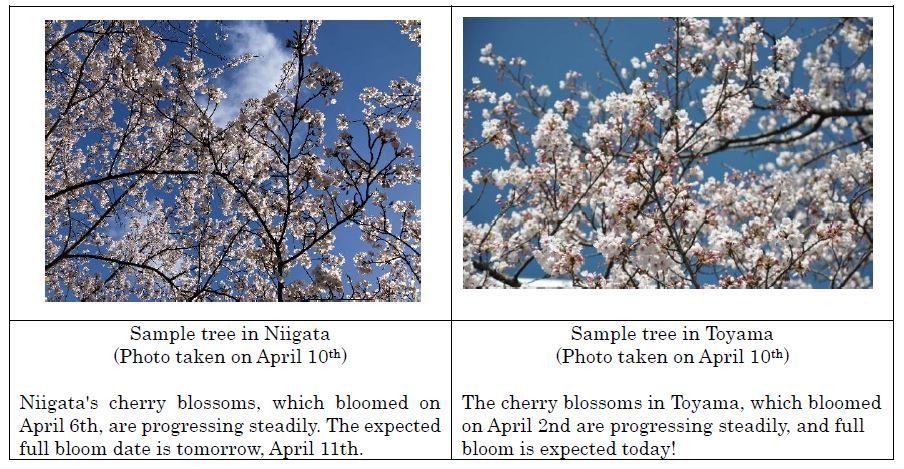
The cherry blossom and full bloom forecast for all 83 locations is available on tenki.jp, a weather forecast media site below operated by JWA.
https://tenki.jp/sakura/expectation/
Cherry Blossom Forecast
For more detailed information about JWA’s Cherry Blossom Forecast, please find the link below.
https://www.jwa.or.jp/english/service/seasonal-news-cherry-blossom-forecast/
【Description of words】
Normal: Average of 1991-2020
Much earlier: 7 or more days earlier than normal
Earlier: 3 to 6 days earlier than normal
Near normal: 1 or 2 days earlier or later than normal
Later: 3 to 6 days later than normal
Much later: 7 or more days later than normal
Originally released in Japanese: 2024/4/10
Reference material
Frequently asked questions regarding cherry blossom forecast
Q1: What are the criteria for the flowering and full bloom dates?
A1: The criteria are the same as those used by Japan Meteorological Agency. The flowering period starts the first day when 5 to 6 or more flowers have started to bloom on the designated observation tree (i.e. sample trees), and the full bloom date is the first day when more than 80% of the buds have opened on the sample trees.
Q2: How many locations are expected?
A2: We announced forecasts for 83 locations nationwide. The forecast locations consist of 53 sample trees observed by each local meteorological observatory and 30 locations where observation data are obtained from cooperating agencies such as municipalities/local governments and parks.
Q3: What are the methods and characteristics of the Japan Weather Association’s cherry blossom forecast?
A3: We use our proprietary forecasting model that focuses on the temperature trends from autumn onwards, which significantly influence the growth process of cherry buds. Our forecasts are based on accurate observation data from sample trees at local meteorological observatories and cooperating agencies, emphasizing meteorological principles. Japan Meteorological Association has been conducting cherry blossom forecasts since 2007, making this year the 18th year of our endeavor.
Q4: What data are used for forecasting cherry blossoms?
A4: The following data are used.
- Temperature observation data from the previous autumn to the forecast date
- Temperature forecast data from the forecast date to the blooming period (from Japan Weather Association’s point forecasts and long-term forecasts).
The temperature from the previous autumn to spring significantly influences the cherry blossoming period. Cherry buds form during the previous summer and then enter dormancy. Exposure to a certain period of low temperatures during winter breaks this dormancy, and the buds grow and bloom with rising temperatures. It is believed that higher temperatures promote faster bud growth and earlier blooming.
PDF DOWNLOAD:Cherry Blossom and Full Bloom Forecast for 2024 (Part 6)

